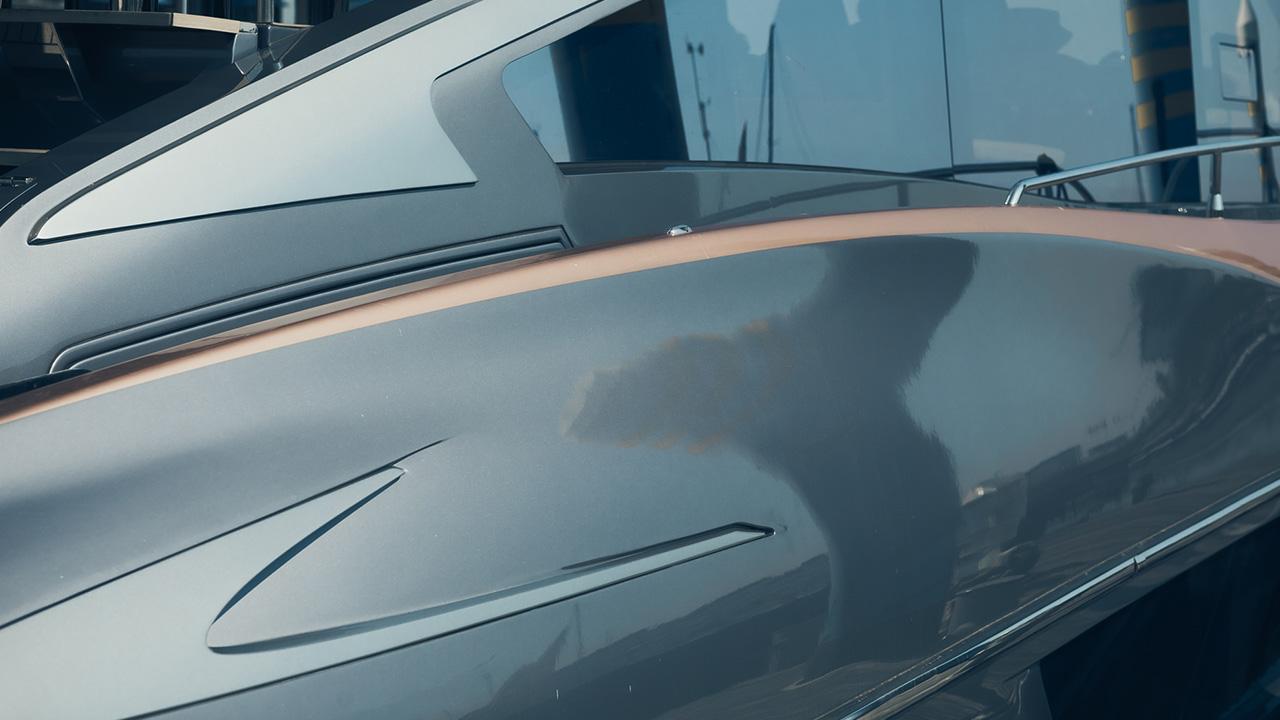
At Toyota, the creative process extends beyond mere car design. To uncover the full story, we decided to speak directly to the designers themselves.

Our journey led us to the scenic Laguna Marina, nestled in the city of Gamagori, Aichi Prefecture. Indeed, our focus for this piece isn't on cars, but on maritime mobility.
Why would a company like Toyota delve into boat-making? Unlike cars, boats aren’t a common sight on city streets. This striking contrast intrigued us to probe deeper and hear more from the designers.
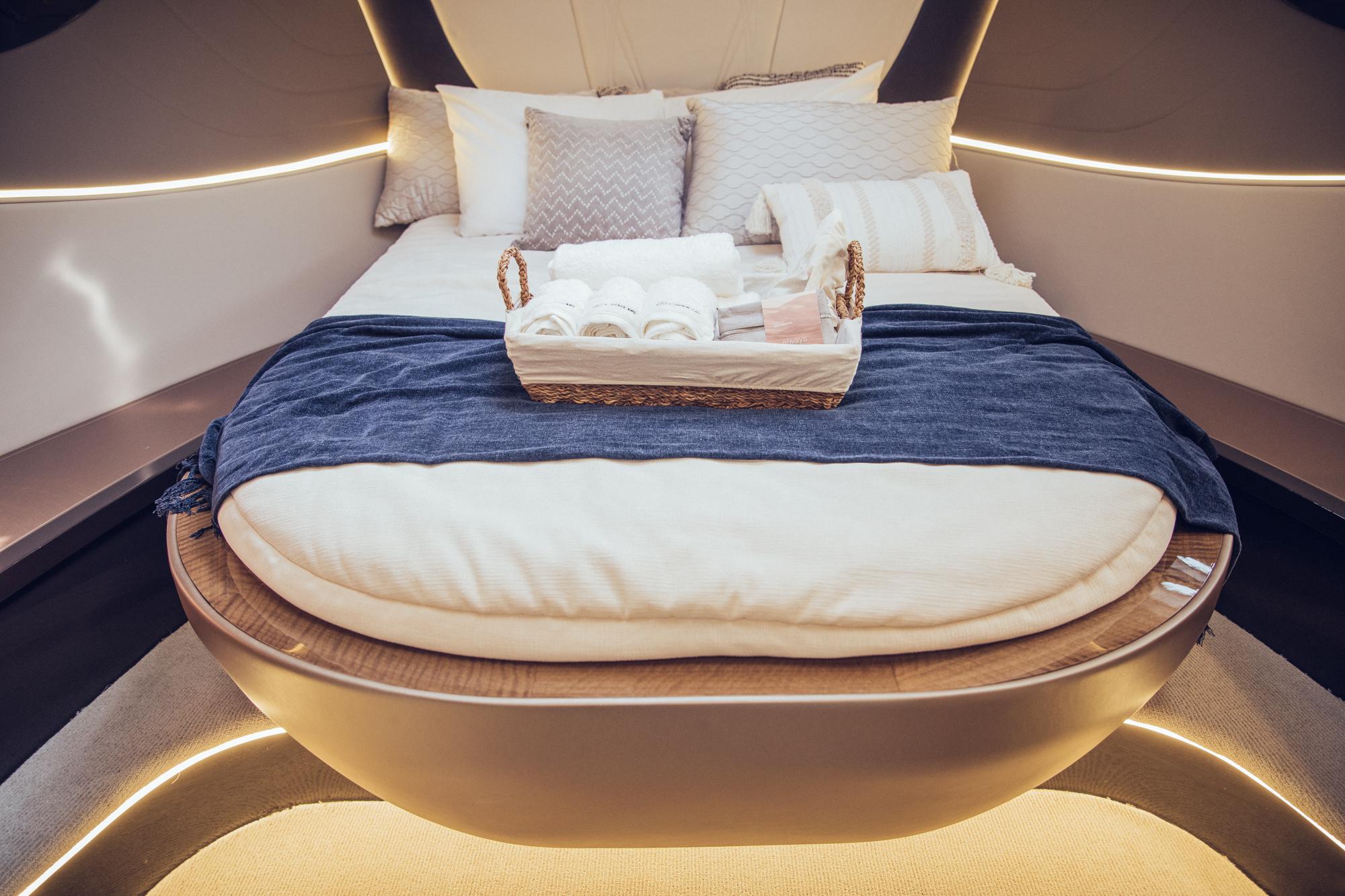
The picture here showcases the elegant bedroom of the Lexus luxury yacht LY650. The standard model is priced at approximately 450 million yen*. Read on as we introduce you to such lavish and extraordinary displays of maritime design.
*Price in Japan excluding domestic taxes as of 2019. Production and sales of the LY650 are currently suspended.
How Toyota brings a unique touch to boat design as a carmaker
Toyota embarked on its marine business back in 1997. Being a brand committed to offering everyone the freedom of mobility, it was a natural step to venture into marine transport.
However, designing a boat presents unique challenges, as its structure and purpose are quite different from a car. So, what hurdles do designers encounter, and what tactics do they employ in this endeavor? We were told there's a unique touch to boat design "that can only be added by a carmaker." Soon enough, the intriguing truth of this statement was made clear.
The question was put to me, "Can you spot any differences between this Toyota boat and others?" Could you discern them?
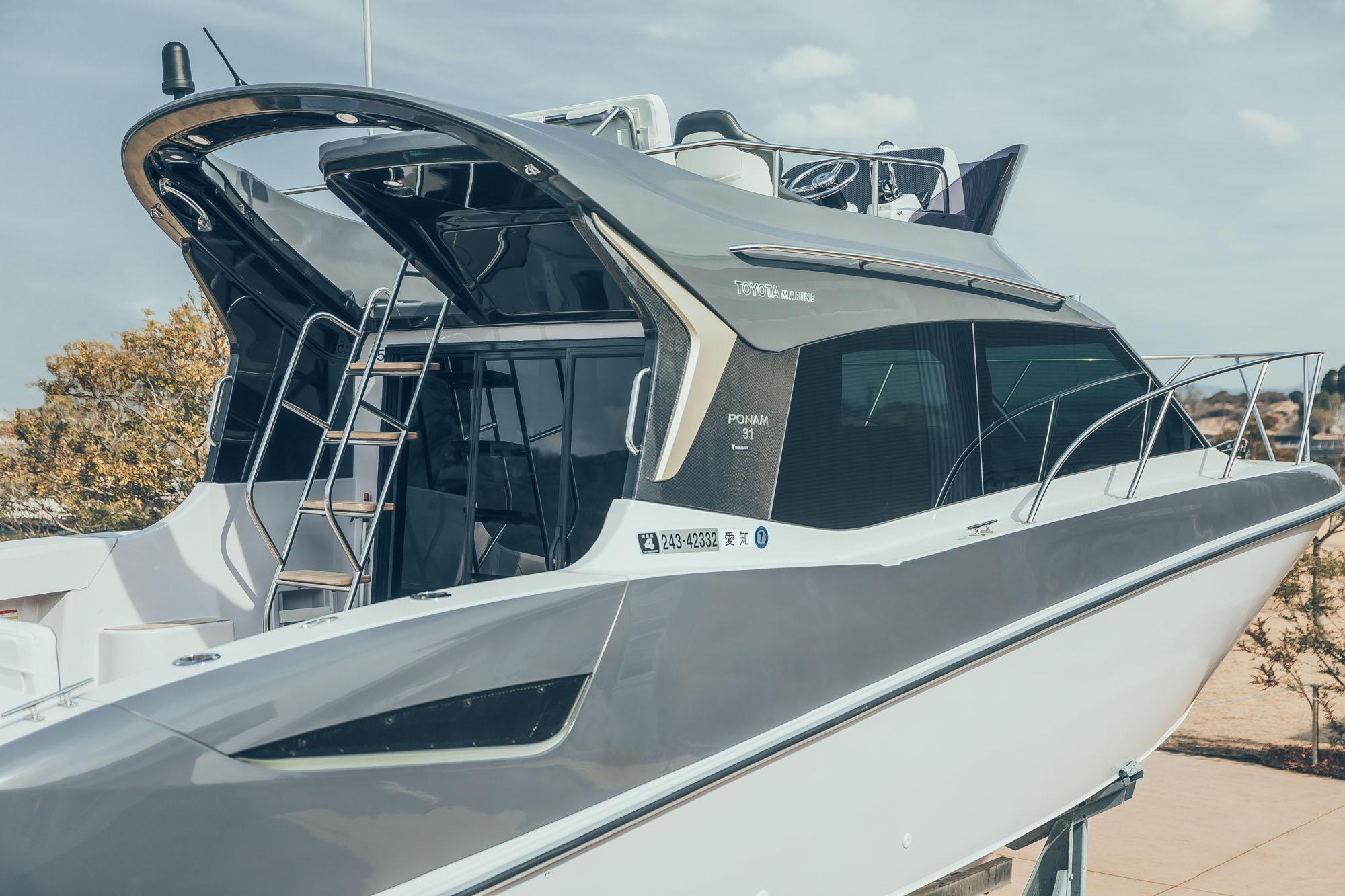
The answer was provided by Katsuji Kanamaru, the Project General Manager of the Vision Design Division.
Kanamaru

While the typical boat usually features a white exterior, we chose to paint this one grey. Doesn't it somewhat echo the aesthetic of a car?
The PONAM-31 is a sports utility cruiser analogous to the SUV of the sea. Its distinctive color scheme amplifies the boat's unique persona.
Further, the hull design intentionally veers off the beaten path.
Kanamaru
We've opted for an aluminum hull for better wave handling, a decision driven by our pursuit of enhanced performance. This counters traditional pleasure boat norms, which have often doubted its durability. Our capacity to embrace this novel approach is thanks to the waterproofing and painting technologies honed through our carmaking processes.
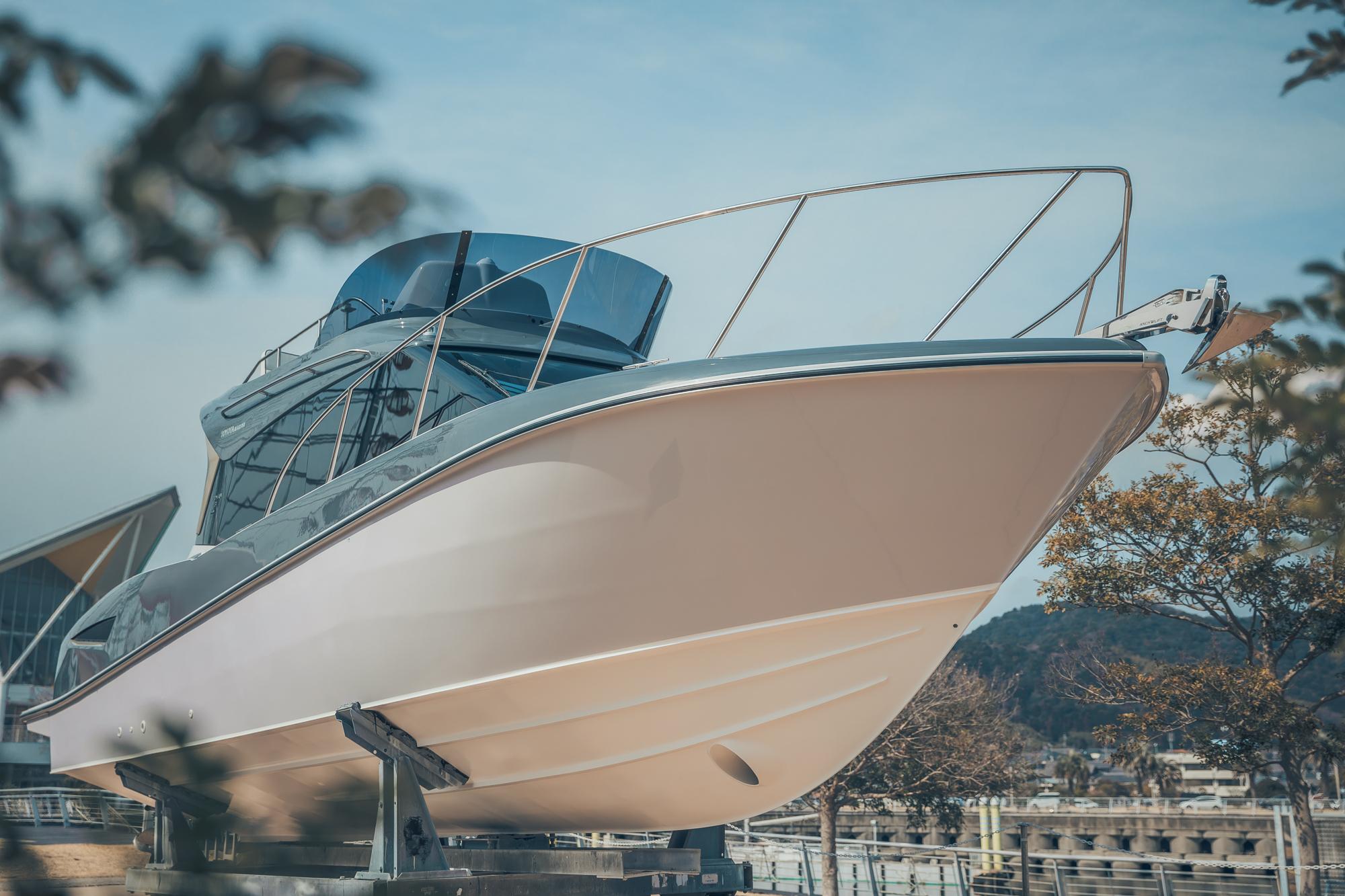
While Toyota's marine business boasts a history of over 25 years, it is still considered a newcomer within the broader shipbuilding industry. Yet, Kanamaru confidently asserts, "We take pride in the technological expertise we've cultivated through car manufacturing and the solid alliances we've established with our partnering companies.”
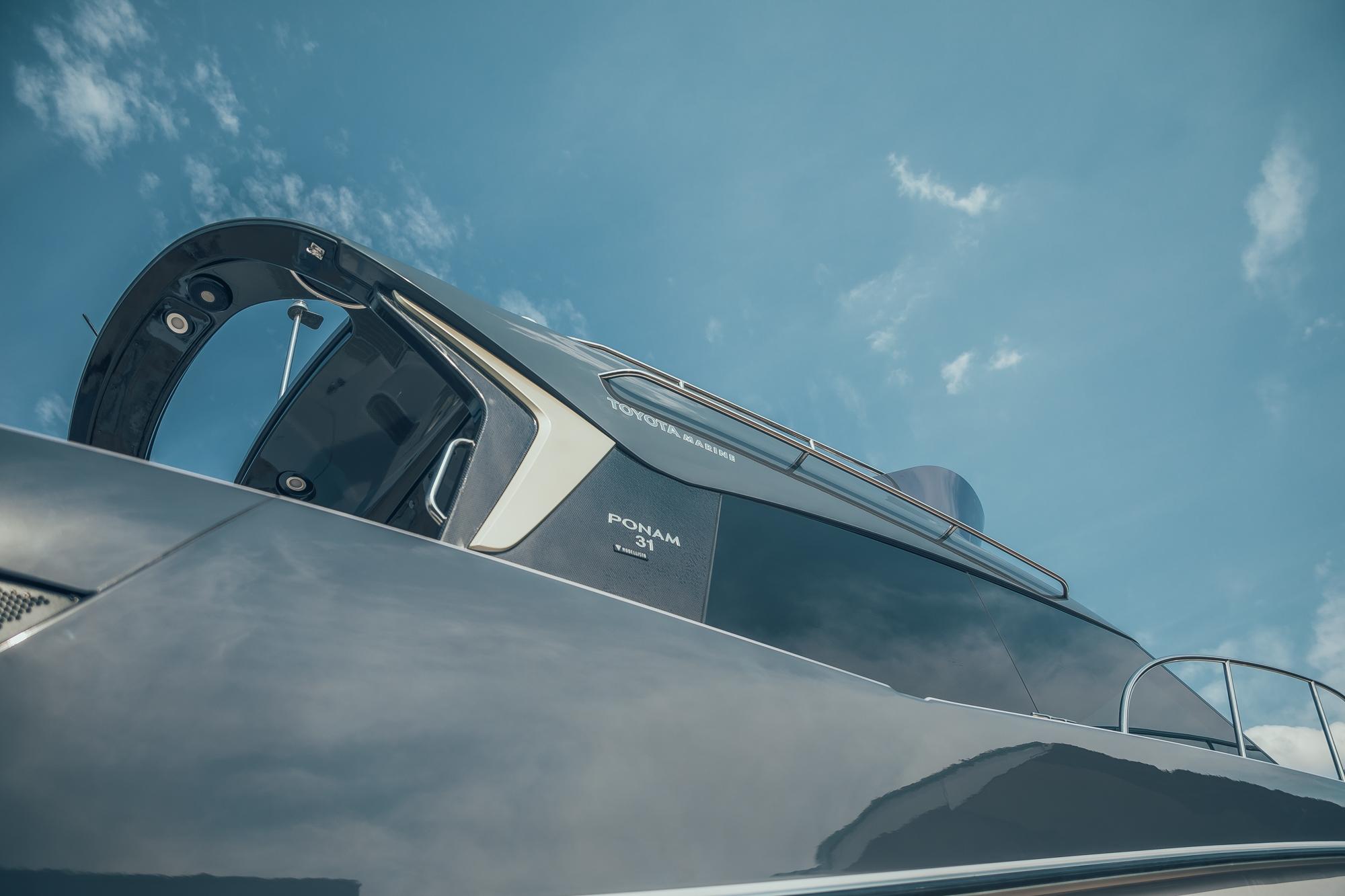
Simply enjoying a collection of fishing rods?
While Kanamaru oversees aspects like concepts and color management, Tetsuya Iwata, Assistant Manager of the Vision Design Division, takes responsibility for the interior and exterior design.
Iwata
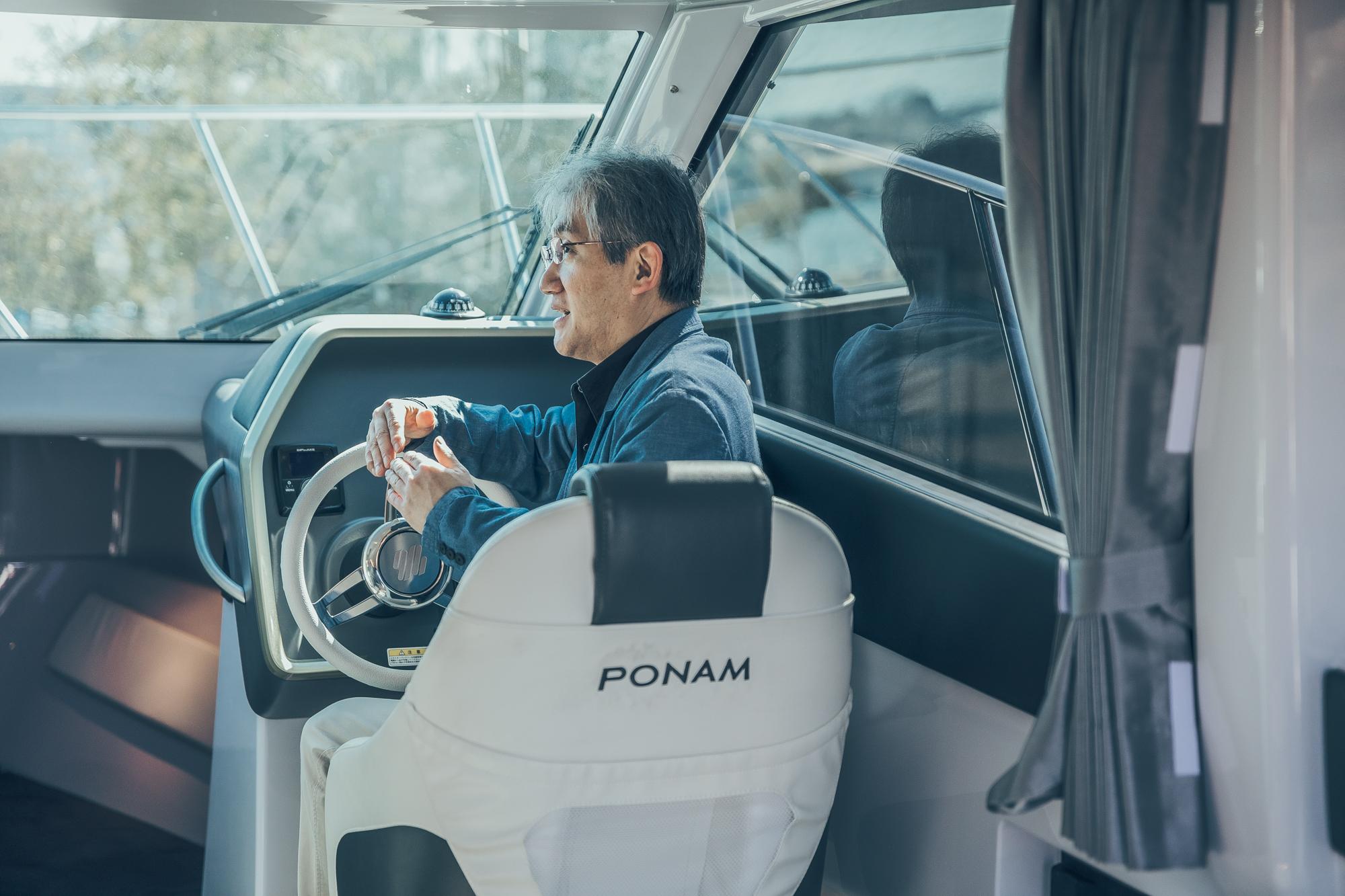
Cars and boats differ greatly, both in size and purpose. Before stepping into marine design, I had limited exposure to boats and hardly understood what joys customers find in activities like fishing or cruising.
Recognizing this, Iwata and his team dove deep by conducting comprehensive interviews with those best acquainted with marine life, such as the Marine Business Department, dealership personnel, and boating enthusiasts, to capture firsthand insights. Moreover, they embraced a practical, hands-on approach.
In the marina office, an array of fishing rods was spotted. Although it initially seemed like a fun pastime under the guise of work, they were indeed trying their hand at fishing onboard to scrutinize and pinpoint any areas for design improvement.
Iwata
As we kept conducting interviews, it became apparent that venturing out to the sea offers the ultimate private sanctuary—free from traffic lights, congestion, and prying eyes. It underlined the importance of the exhilarating and emotive elements we usually associate with cars.
Zipping freely across the boundless ocean, the boat offers a tangible Fun to Drive experience.
While standing passengers are rarely considered in car design, the time people spend on their feet is a key aspect of boat usage. Thus, innovative space design is critical to amplifying the Fun to Marine experience and provides an intriguing challenge for the designers.
In the PONAM-31, the rear section, which houses the engine, has been expanded to convey a sense of robustness.
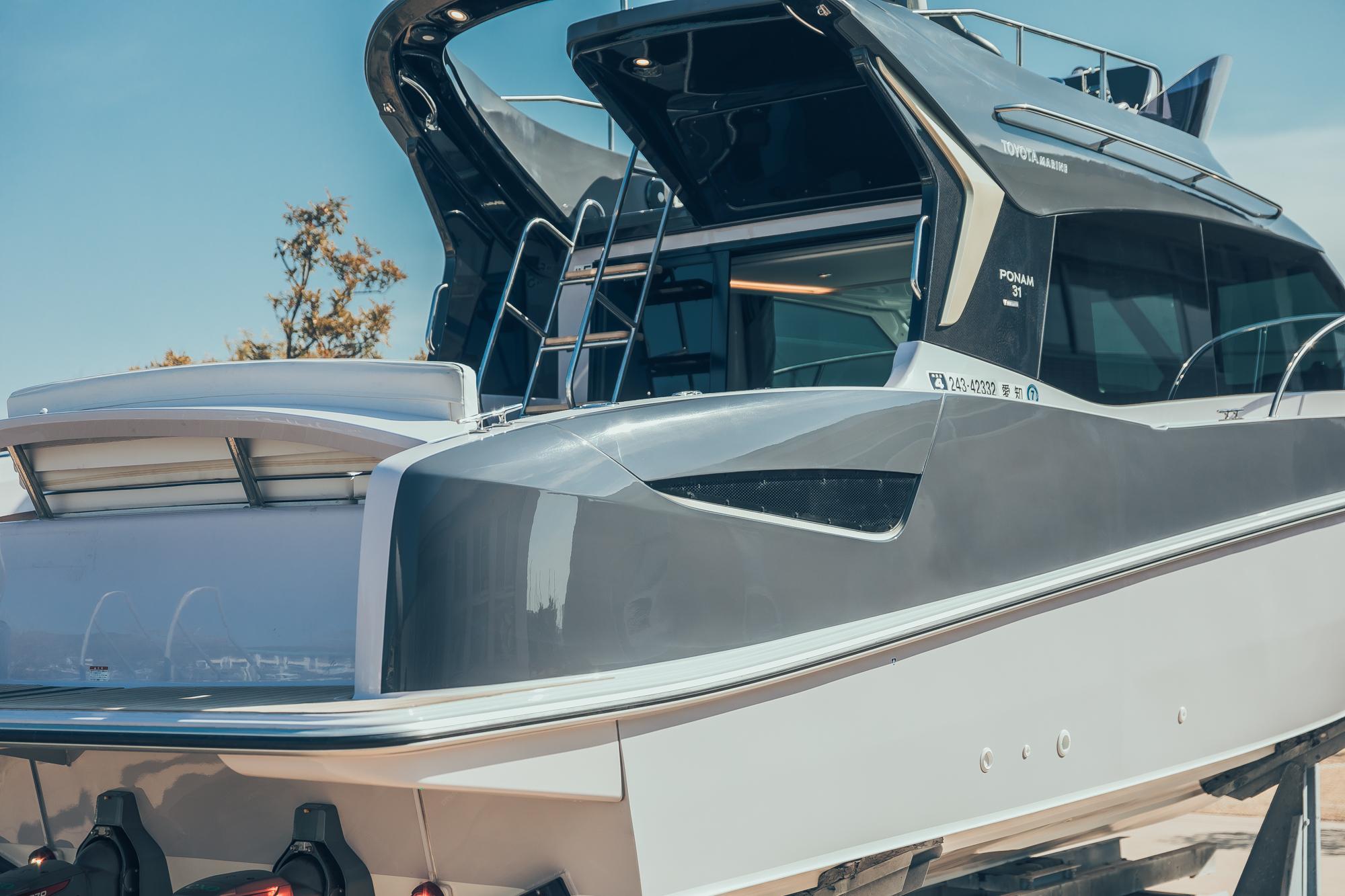
As boats are boarded from the rear, this area's impression plays a pivotal role, drawing on the design principles gleaned from automotive exterior styling.
On the following page, we present the luxurious Lexus yacht, ushering you into a world beyond the ordinary.

